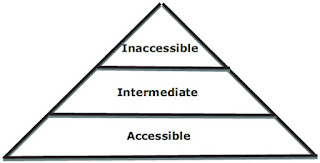Every year for the last 12 years, H&M has designed
and released a collaboration with a luxury brand which results in a one-off
clothing range each year that brings high-fashion to the high-street. A luxury brand is typically more expensive in price and perceived to be better in quality.
The most recent (2015) and most successful luxury brand collaboration was the Swedish giant's collaboration with Balmain. The point of these collaborations is to create a merger between what is termed 'inaccessible luxury' (Balmain) (see Figure 1) and non-luxury (H&M) at accessible price points for one moment in time. Balmain is a Parisian haute couture fashion house founded in 1946 by Pierre Balmain. By contrast, H&M is a multi-national fast fashion retailer. There are obvious differences in terms of brand values. However, this merger creates enormous exposure for both brands and excites fashion-obsessed consumers all over the world whom, as you will read and see below, went to extreme lengths to obtain pieces from the collection. So, what made this particular collaboration with Balmain become the fastest selling collection in H&M's history? I thought you'd never ask!
Figure 1: The Luxury
Pyramid (Allérès, 1995)
H&M made a
calculated use of specific behavioural change techniques in order to (1) influence the consumer’s
willingness to pay (Wertenbroch & Skiera, 2002) for the H&M x Balmain collection and (2) persuade the
consumer to perceive H&M x Balmain as a ‘must-have’. H&M deliberately and tactically used scarcity marketing to generate buzz around the collaboration with Balmain in order to influence consumer behaviour both online and offline.
Above: The Plight of Humanity
Ready Set Fight: Scenes
outside the H&M store on the Champs Elysees in Paris on the H&M x Balmain day of launch
A study by Worchel, Lee and Adewole (1975) investigated the effects of scarcity on consumer preference. In this experiment participants were given a chocolate chip cookie and asked to eat from one of two jars: (1) a jar which contained two cookies or (2) a jar which contained ten cookies. Participants were asked to taste and rate the quality of the cookie. The researchers operationalised scarcity in two ways. Firstly, the researchers manipulated the supply of cookies. For example, the cookies were either constantly scarce or some participants were initially given a jar of ten cookies which was subsequently reduced to two. Other participants were either given cookies which were in constant abundance or cookies which were at first scarce and then became abundant.
Table 1: Mean ratings for Liking, Attraction and Cost (Experiment 1)
A second way in which the researchers created scarcity was by either informing participants that their cookies had to be given away to be used by other raters in the study to supply the demand (social demand) or that the participants were given the wrong jar by the researcher (accident). The results indicated that participants whose cookies became scarce as a result of social demand liked the cookies significantly more than those whose cookies became scarce by mistake (Cialdini, 2014). This highlights that social demand of a scarce product can lead to an increased affinity for a commodity.
Scarcity Sells!
References
Allérès, D. (1995). Luxe: un management spécifique. Economica.
Cialdini, R. B. (1987). Compliance principles of compliance professionals: Psychologists of necessity. In social influence: The ontario symposium (Vol. 5, pp. 165-184). Lawrence Erlbaum Associates Hillsdale, NJ.
Cialdini, R. B. (2014). Influence: Science and practice (Vol. 4)> Boston: Pearson Education.
Gierl, H., Plantsch, M., & Schweidler, J. (2008). Scarcity effects on sales volume in retail. The International Review of Retail, Distribution and Consumer Research, 18(1), 45-61.
Wertenberoch, K., & Skiera, B. (2002). Measuring consumers' willingness to pay at the point of purchase. Journal of Marketing Research, 39 (2), 228-241.
Worchel, S., Lee, J., & Adewole, A. (1975). Effects of supply and demand on ratings of object value. Journal of Personality and Social Psychology, 32(5), 906.




No comments:
Post a Comment
Note: Only a member of this blog may post a comment.